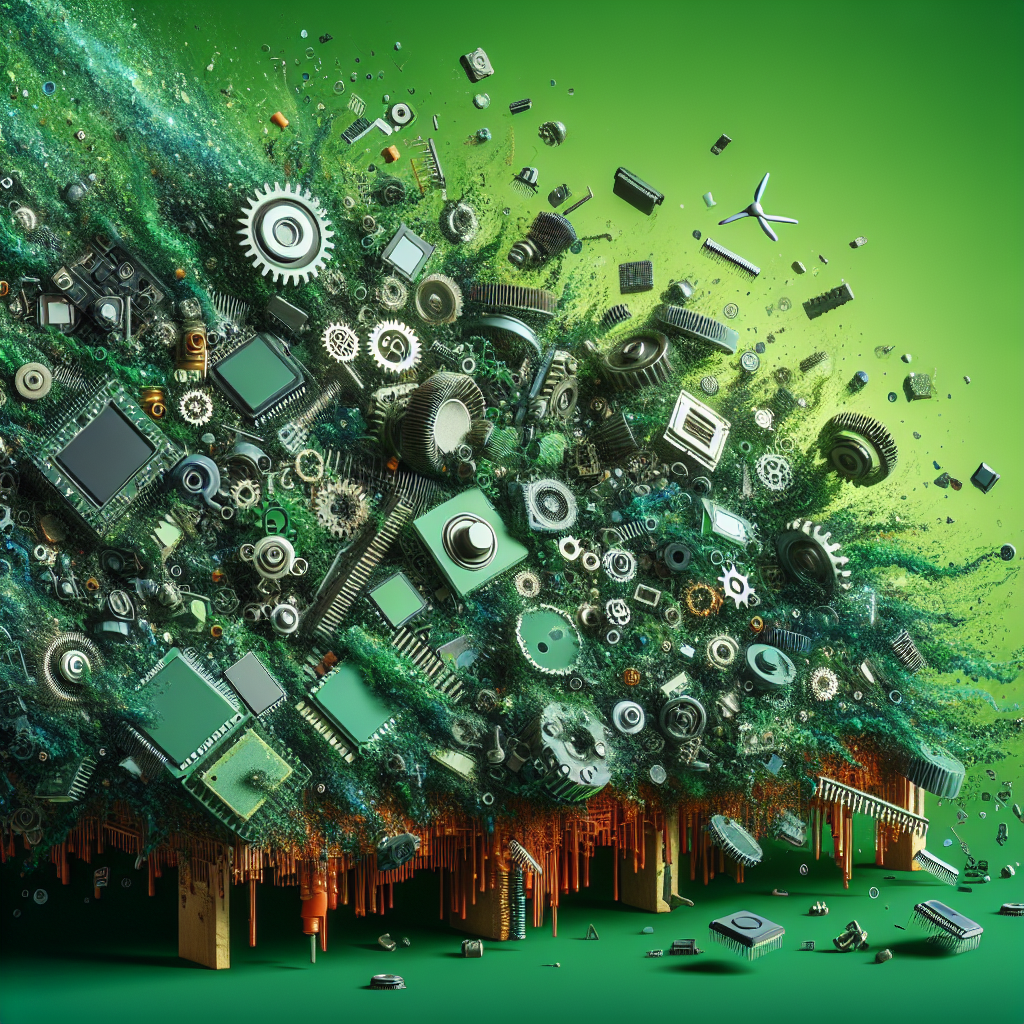Blog Ecobraz Eigre

The Real Impact of Small Electronic Components on the Environment
Composition and Dimension of Small Electronic Components
Small electronic components, present in various devices, are made of materials such as heavy metals (lead, mercury, cadmium), plastics, and rare chemical elements. Despite their small size, the aggregate of these components represents a significant volume of electronic waste in the global disposal flow. The extraction and use of these materials directly impact natural cycles and environmental health due to their difficulty to decompose and toxicity.
Toxic Waste and Environmental Contamination
When improperly discarded, small electronic components release toxic substances into the soil and water, contaminating environments and affecting biodiversity. Contact with heavy metals can cause bioaccumulation in aquatic and terrestrial organisms, compromising food chains and generating risks to human health. Brazilian legislation, such as the National Solid Waste Policy (Law No. 12,305/2010), establishes shared responsibility for the product life cycle, including the proper disposal of such waste.
Challenges of Safe Disposal and Recycling
Small electronic components require specific techniques for recycling and material recovery, given their size and complex composition. Low adherence to formal disposal processes contributes to the increase in urban solid waste volume and raises environmental risks. Proper electronic waste collection is essential to mitigate these impacts, promoting correct disposal and encouraging material reuse. To schedule specialized electronic waste collection, it is recommended to access https://ecobraz.org/pt_BR/eletronicos.
Safety in Disposal of Electronic Media
In the case of storage devices, such as hard drives (HDs) and other electronic media, in addition to the environmental impact, there is concern about information security. Sanitization and safe disposal procedures are essential to ensure confidentiality and protection against unauthorized access. Scheduling for HD sanitization can be done via https://ecobraz.org/pt_BR/sanitizacao-de-hd.
Applicable Legislation and Technical Standards
In addition to the PNRS, technical standards such as those published by the National Institute of Information Technology (ITTI) and state environmental agencies reinforce good practices for minimizing the impacts of electronic waste. CONAMA Resolution No. 401/2008 regulates the management of electronic component waste, assigning responsibilities to those responsible for generation and disposal. To reinforce compliance, it is essential to implement internal processes aligned with regulatory guidelines, optimizing the environmental management of small electronic components.
Conclusion
Although small, electronic components have a significant environmental impact due to toxicity and difficulties in disposal and recycling. The implementation of effective collection policies, compliance with current regulations, and the use of specialized services for disposal and sanitization are essential to reduce environmental effects and strengthen the sector's sustainability.

Deixe um comentário
O seu endereço de e-mail não será publicado. Campos obrigatórios são marcados com *